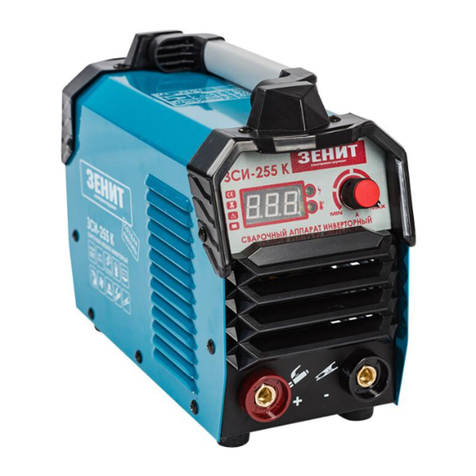
3
GENERAL SAFETY PRECAUTIONS
WARNING! When using electric
tools, basic safety precautions should al-
ways be followed to reduce the risk of re,
electric shock and personal injury, includ-
ing the following.
Read all these instructions before operat-
ing this product and save these instruc-
tions.
For safe operations:
1. Keep work area clean. Cluttered areas
and benches invite injuries.
2. Consider work area environment. Do
not expose power tools to rain. Do not
use power tools in damp or wet locations.
Keep work area well lit. Do not use power
tools where there is risk to cause re or
explosion.
3. Guard against electric shock. Avoid
body contact with earthed or grounded
surfaces. (e.g. pipes, radiators, ranges, re-
frigerators).
4. Keep children and inrm persons away.
Do not let visitors touch the tool or exten-
sion cord. All visitors should be kept away
from work area.
5. Store idle tools. When not in use, tools
should be stored in a dry, high or locked
up place, out of reach of children and in-
rm persons.
6. Do not force the tool. It will do the job
better and safer at the rate for which it was
intended.
7. Use the right tool. Do not force small
tools or attachments to do the job of a
heavy duty tool. Do not use tools for pur-
poses not intended.
8. Dress properly. Do not wear loose
clothing or jewelry; they can be caught in
moving parts. Rubber gloves and non-skid
footwear are recommended when working
outdoors. Wear protecting hair covering to
contain long hair.
9. Use eye protection. Also use face or dust
mask if the cutting operation is dusty.
10. Connect dust extraction equipment. If
devices are provided for the connection
of dust extraction and collection facilities
ensure these are connected and properly
used.
11. Do not abuse the cord. Never carry the
tool by the cord or yank it to disconnect it
from the receptacle. Keep the cord away
from heat, oil and sharp edges.
12. Secure work. Use clamps or a vise to
hold the work. It is safer than using your
hand and it frees both hands to operate
tool.
13. Do not overreach. Keep proper footing
and balance at all times.
14. Maintain tools with care. Keep cut-
ting tools sharp and clean for better and
safer performance. Follow instructions
for lubrication and changing accessories.
Inspect tool cords periodically and if
damaged, have it repaired by authorized
service center. Inspect extension cords pe-
riodically and replace, if damaged. Keep
handles dry, clean, and free from oil and
grease.
15. Disconnect tools. When not in use, be-
fore servicing, and when changing acces-
sories such as blades, bits and cutters.
16. Remove adjusting keys and wrench-
es. Form the habit of checking to see that
keys and adjusting wrenches are removed
from the tool before turning it on.
17. Avoid unintentional starting. Do not
carry a plugged in tool with a nger on the
switch. Ensure switch is off when plug-
ging in.
18. Use outdoor extension leads. When
tool is used outdoors, use only extension
cords intended for outdoor use.





























